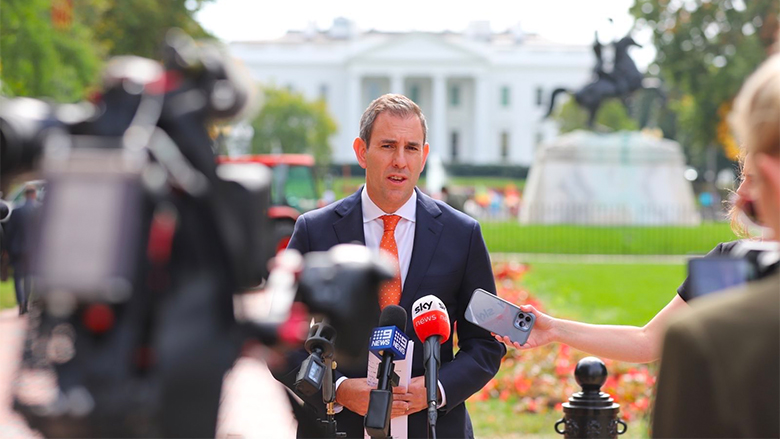In a report published on 19 October, Mr Halmarick writes that improvements to the budget bottom-line in 2021/22 and stronger-than-expected growth in nominal gross domestic product (GDP) point to a 2022/23 budget deficit of approximately $A30bn-$A40bn, or 1.2%-1.5% of GDP.
The report notes this would represent little change in the fiscal position from the 2021/22 deficit of 1.4% of GDP, but will be substantially lower than the 2020/21 deficit of 6.5% of GDP.
“The budget position has improved over the past year because the economy has done better than previously expected. Companies are earning more revenue and there are more people employed, so tax receipts are higher,” Mr Halmarick told CBA Newsroom.
In his report, he explains that the improvement in the 2021/22 bottom-line of $A47.9bn came from a combination of higher tax receipts ($A14.4bn in company tax and $A6.8bn in individual tax), thanks to higher commodity prices and the strength of the labour market, and a reduction in outlays ($A20.1bn), thanks to the stronger economy, delayed spending on key infrastructure projects and a temporary reduction in payments associated with the some health and NDIS services.
The report goes on to note it will be important for the government to maintain budget deficits of approximately 1%-1.5% of GDP not only in 2022/23, but also over the next few years to assist the Reserve Bank of Australia in managing the economic cycle and the current surge in inflation.
“Both the Prime Minister and Treasurer have said that they are aware that fiscal policy has to work hand-in-hand with monetary policy to help get on top of inflation. The recent experience in the UK provides a very good example of how markets might respond if you don't do that,” Mr Halmarick added.
“The government needs to keep the budget deficit relatively small for this year, next year, the year after at around 1%-1.5% of GDP,, and if the economy is growing stronger , then the debt level actually comes down, which is what you want to see,” he explained to CBA Newsroom.
In the report, Mr Halmarick writes that CBA’s forecast for nominal GDP growth in 2022/23 is approximately 7%/yr.
The report also notes that commentary from Mr Chalmers and Prime Minister Anthony Albanese, as well as media reports, indicate that policy/spending initiatives in the 2022/23 Budget may include:
- Increased funding over a number of years for the NDIS, aged care, health and defence.
- An increased infrastructure spending package providing additional funds to the states for various nationally significant infrastructure projects.
- A range of “family policy” measures, such as additional funds for child care and paid parental leave. These measures will be aimed at not only providing some support to families but also increasing the female labour force participation rate.
- Measures to support the take-up of electric cars.
- Increased funding allocated to disaster-ready programs. (The report notes that recent and ongoing natural disasters, such as floods, will also likely add some cost pressures to the budget.)
Read Mr Halmarick’s full federal budget preview via Commonwealth Bank’s Global Economics and Market Research.



